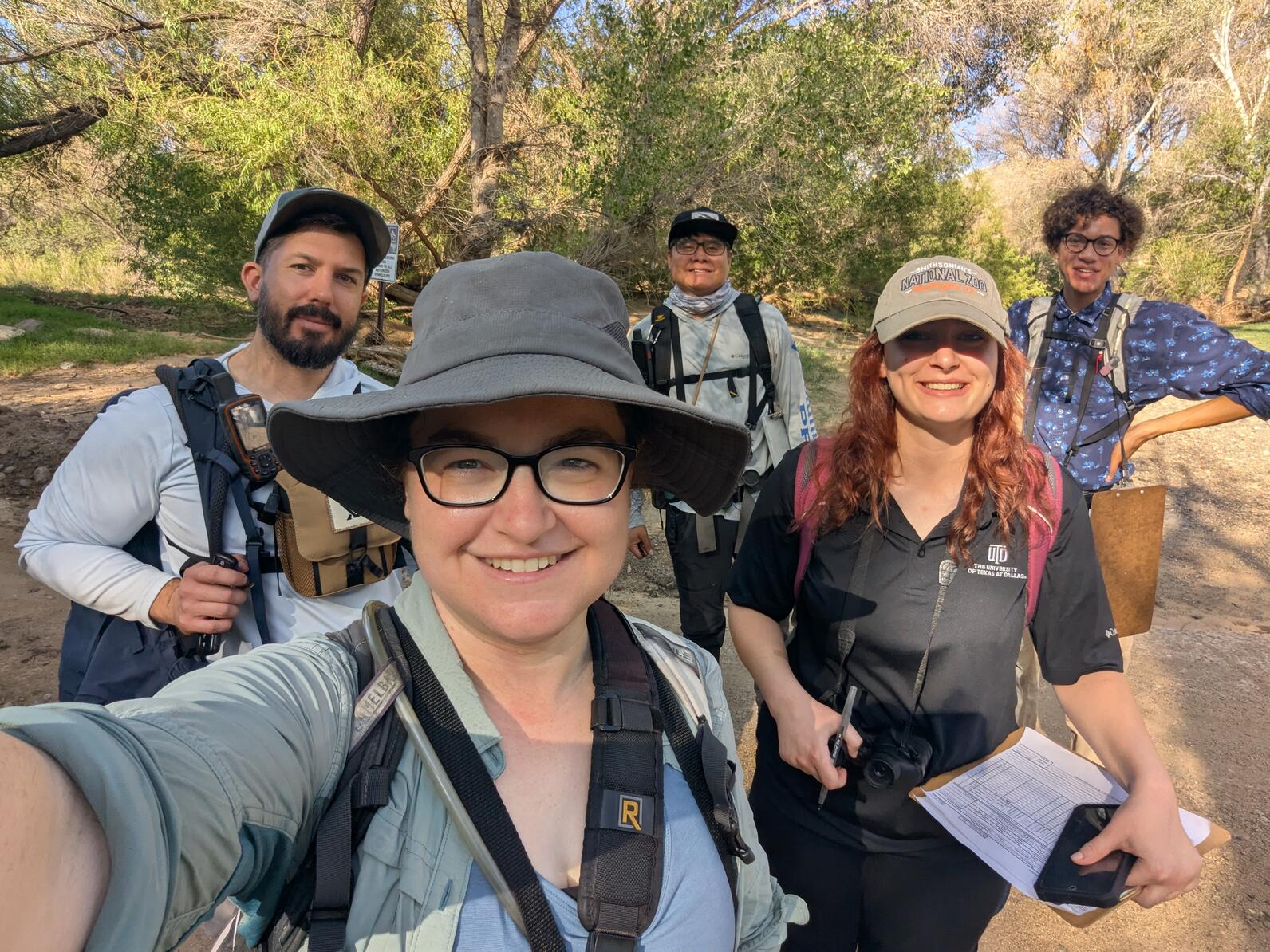Imagine yourself as an athletic, long tailed and white breasted bird. Although only dove-sized, you fly to and from Paraguay and the American West twice a year, a journey of some 5,000 miles. You are a Western Yellow-billed Cuckoo (Coccycus americanus), part of a distinct population segment (DPS) of the more common birds found east of the continental divide. You are considered a threatened species by the U.S. Fish and Wildlife Service, meaning the humans need a permit to survey for you!
Unlike your more common eastern colleagues that frequent suburban backyards and nest in city parks, you look to western rivers and humid, bug rich oak woodlands in southeastern Arizona for breeding and nesting. So, you are in the southwest for the hottest, most inhospitable four months of the year. Sadly, pickings are getting slimmer for nesting, and Audubon Southwest is well-positioned to tell your sobering, but not hopeless, story.
I first surveyed Western Yellow-billed Cuckoos in central AZ in 2003 while working for the Arizona Game and Fish Department, seven months pregnant. I loved it! Resurfacing from mom-land, I found myself at Audubon—and we revived surveys in 2011 through partnerships with Bureau of Land Management and the U.S. Forest Service. We have continued surveys, mostly in the same areas, for 14 years. My son graduated college!
Audubon differentiates itself from other conservation organizations by a focus on engagement—and our survey efforts always included partners as well as hiring local high school/college students as interns. Over the years, 17 interns assisted Audubon with field efforts that are sweaty, strenuous, and require early morning starts.

Post pandemic, Sonoran Audubon Society stepped up to provide intern support, and Prescott Audubon maintained their steadfast support to survey on the Verde River. What does all this boil down to? A lot of data, and proof of an overall downward trend in occupancy.
In 2025, we coordinated 15 permitted surveyors, 10 agencies, and 21 interns and/or volunteers to complete four-visit surveys on 20 transects (about 1-2 km each). Reports show that although conditions are drier than ever, bird persist. From June 15-August 15, 2025, data demonstrates that surveyors collectively spent 164 party hours surveying and made a total of 77 detections. Note that a “detection” means a bird was heard or seen (or both), but until we map out the detections this fall, it is impossible to determine if we are re-counting the same bird on a territory, or a new bird searching for a mate.
Cuckoos do NOT mate for life and are quite promiscuous on the breeding grounds so during surveys we attract them by playing a taped call. When birds can’t find mates, they will follow us as we hike/call along our transect, looking… ever hopeful, for a mate (sorry, guys!). Sadly, no nests or nestlings were encountered this season on any routes during our survey season.
Although data analysis is still underway, we are seeing an overall decline in detections as well as habitat quality. Dry conditions and stressed trees were noted on most survey routes, as was a reduction in the volume of other birds—these usually produce a morning cacophony surveyors need to mentally sort through while listening for cuckoos. Also noted was a decline in the large insects cuckoos rely on for energy to mate, nest, and raise young. Typically, central Arizona’s riparian areas are a-buzz with cicada mid-summer, and large grasshoppers abound. This year was markedly quiet.
You are a cuckoo again, and after a long migration to the U.S., things are looking grim. Fortunately for you, central and southern AZ saw later than normal monsoons, so it is possible that post-survey season, you brought off a brood. Now y’all are tanking up for a long trip south. But what about next summer?
We can help Western Yellow-billed Cuckoos and other riparian species persist and hopefully thrive during this challenging time by supporting legislature protecting water for wildlife. Please join the Western Water Action Network today, and make your voice heard. Yellow-billed Cuckoos can’t advocate, but you can, and if these data aren’t a call to action, I don’t know what is.
For more information about Yellow-billed Cuckoos’ migration see Audubon’s Bird Migration Explorer.
2025 Western Yellow-billed Cuckoo survey training.




